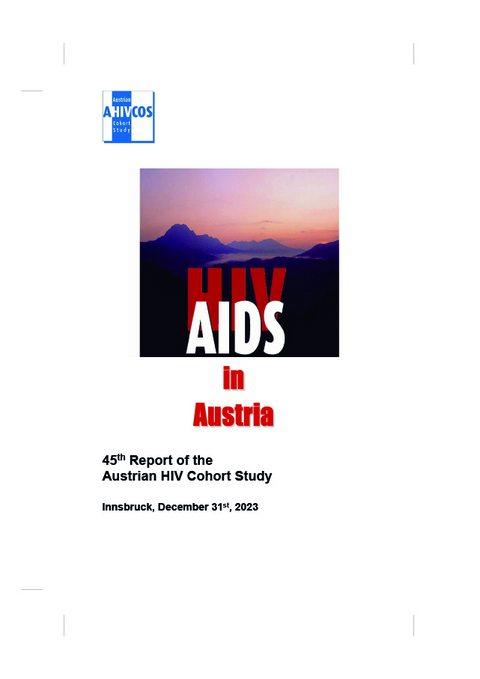
HIV-AIDS in Austria
45th Report of the Austrian HIV Cohort Study
Seiten
2024
|
1. Auflage
Studia Universitätsverlag Innsbruck
978-3-99105-054-4 (ISBN)
Studia Universitätsverlag Innsbruck
978-3-99105-054-4 (ISBN)
At the end of the year 2001, representatives of 5 Austrian HIV treatment centres (AKH Vienna, Otto-Wagner-Hospital Vienna, AKH Linz, LKH Innsbruck and LKH Graz West) have founded the "Austrian HIV Cohort Study (AHIVCOS)". In 2008, two more centres (LKH Salzburg and LKH Klagenfurt) and in 2016 one more centre (Kaiser- Franz-Josef-Hospital Vienna) joined the AHIVCOS. The responsibility for the medical and scientific coordination lies with Robert Zangerle from the Innsbruck Medical University. Aims of Austrian cohort study are: 1) Optimization of patient management 2) HIV surveillance 3) Research projects A special software, the "HIV Patient Management System (HIP)" is used in all centres and has replaced the previous HIV data base in 2005. The input of data is (was) done peripherally in the HIV treatment centres which consistently use the data base for clinical care. The input of laboratory findings is mostly done electronically. Apart from nurses and doctors, additional professional groups are involved in data entry in some centres (social workers, psychologists). Before data can be merged, the cohort participants are made anonymous. Therefore, it is cumbersome to identify cohort participants who are/were treated in more than just one treatment centre. This cannot be done by the use of personal data such as initials, birthday or postal code, but with HIV specific data (date of the HIV test, CD4 cell counts etc.). HIV Patient Management System: Designed as a client-server application, the HIP stores its data in a persistent SQL database. The software is based on the model driven architecture paradigm and has been implemented with Microsoft .NET technology. The company DI Heinz Appoyer (now called network vita) was entrusted with the development of the HIP. The required hardware is provided by the local IT departments in the centres. In terms of data protection the programme fully complies with the Austrian data protection act (DSG 2000, valid since 1.1.2000). Access to the data base in the centres is restricted to authorized users only. On the one hand, the HIP fulfils complex tasks for the clinical management of HIV infected patients, and on the other hand it allows queries and analyses to be performed by the users without restrictions. However, to allow both individual patient management and scientific queries is an enormous challenge which scientific HIV cohorts in other countries have not had to deal with. In Austria, there was no acceptance for a purely scientific data base. While for the clinical patient management the focus is on readability of diagnoses and therapies, creation of medical reports, prescriptions (trade names!), print-out of results etc., scientific queries need precise coding and categorization. Furthermore, the optimization of individual patient management requires an ongoing adjustment to the progress of information technology, whereas purely scientific data bases do not have such technological renewal pressure.
| Erscheinungsdatum | 26.04.2024 |
|---|---|
| Verlagsort | Innsbruck |
| Sprache | englisch |
| Maße | 149 x 210 mm |
| Gewicht | 207 g |
| Themenwelt | Studium ► Querschnittsbereiche ► Infektiologie / Immunologie |
| Schlagworte | AIDS • austria • Cohort Study • HIV |
| ISBN-10 | 3-99105-054-4 / 3991050544 |
| ISBN-13 | 978-3-99105-054-4 / 9783991050544 |
| Zustand | Neuware |
| Haben Sie eine Frage zum Produkt? |
Mehr entdecken
aus dem Bereich
aus dem Bereich
Buch | Softcover (2023)
Lehmanns Media (Verlag)
CHF 27,90


